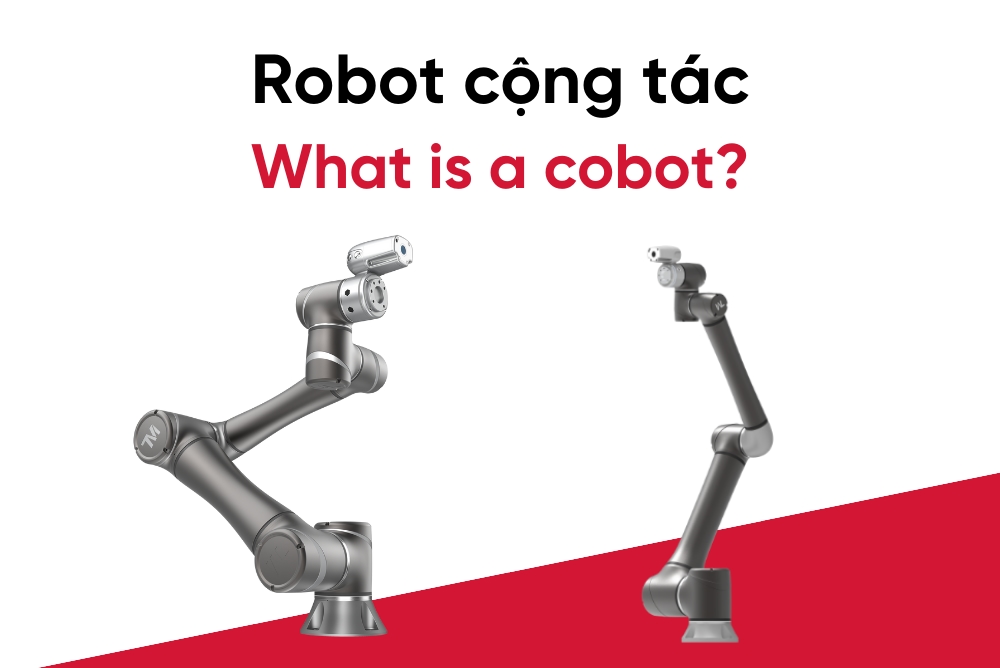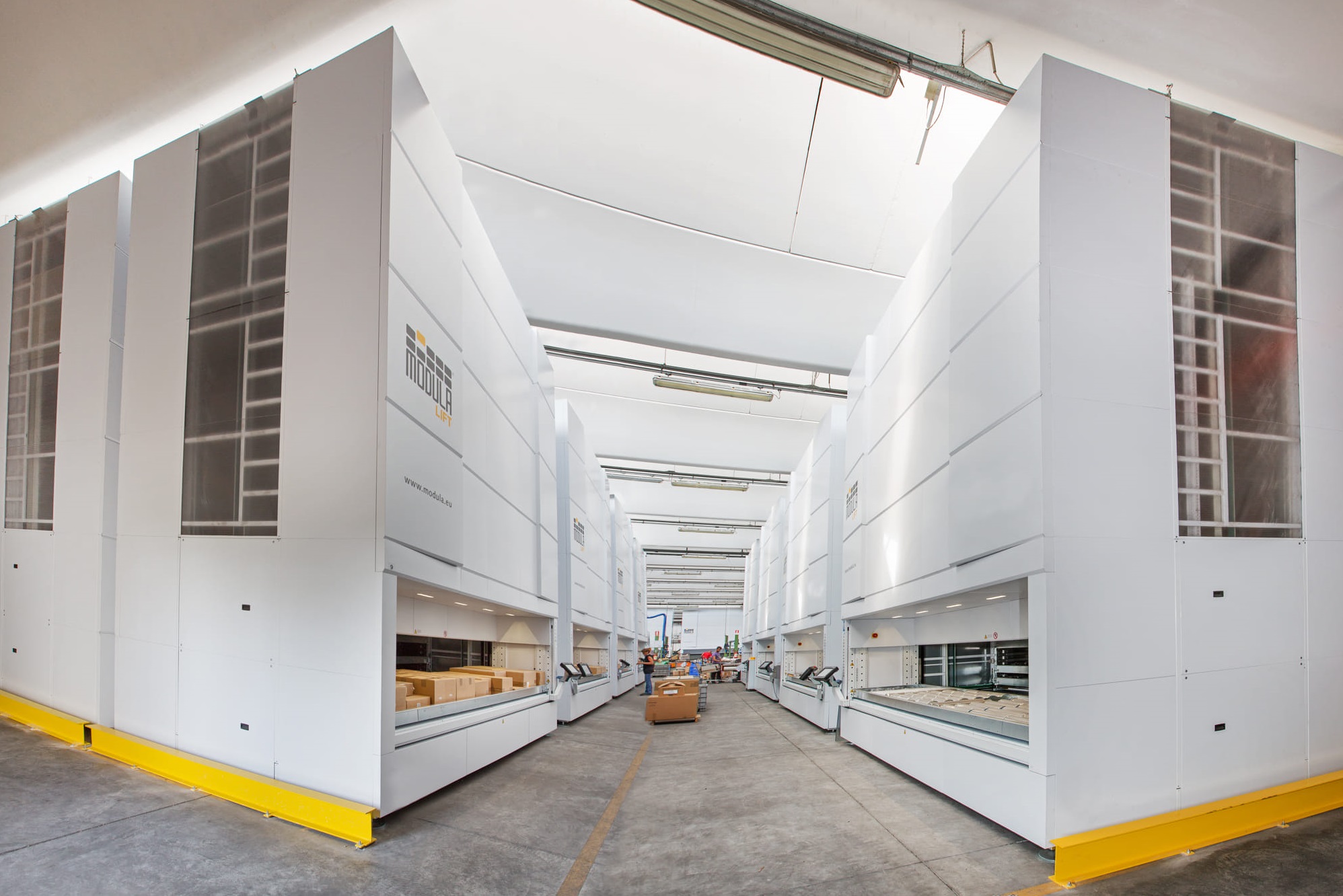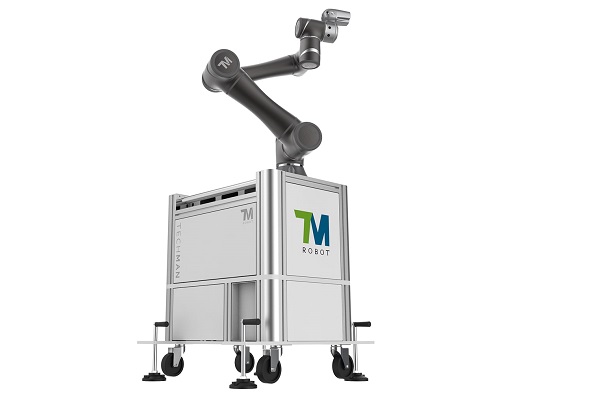In the context of Industry 4.0, collaborative robots have emerged as a breakthrough trend, bringing innovation and optimization to production and work processes. The article aims to help readers understand the concept of 'collaborative robots' and dispel four common misconceptions surrounding this technology.
What is a Collaborative Robot?
Collaborative robots (also known as cobots - collaborative robots) are a type of robot designed to work alongside humans in the same workspace safely and efficiently. This differs from traditional industrial robots, which typically need to operate in isolated areas or require strict safety measures to prevent collisions with humans.
Techman Collaborative Robot
Collaborative robots are equipped with safety sensors and features that allow them to automatically stop or slow down when they detect the presence of a human within their working range. This creates a safe working environment and enables humans and robots to work together in a shared space, assisting each other in tasks such as production, assembly, or other jobs that require flexibility and interaction.
4 Common Misconceptions about Collaborative Robots
Complete Automation
One common misconception is that collaborative robots can fully automate all work processes. In reality, they still require human guidance and supervision in many instances. While they can interact and work alongside humans, human intervention is often necessary during the initial stages.
All Robots Are Collaborative Robots
This is not entirely true. Although many robots can operate near humans, not all are designed to function in a collaborative environment. Traditional industrial robots primarily operate independently or need to be isolated to ensure human safety.
No Safety Measures Needed When Working with Collaborative Robots
Even though they are designed to work alongside humans, it doesn't mean they are entirely safe without any protective measures. Depending on their specific design, the use of collaborative robots still requires adherence to safety rules and protections to prevent accidents.
No Risk to Human Jobs
Another common misconception is that the introduction of collaborative robots will not impact human jobs. Implementing collaborative robots can lead to changes in job roles and necessitate new skills for employees to work effectively with these robots.
What Tasks Do Collaborative Robots Perform?
Collaborative robots (cobots) perform a wide range of tasks across various industries. These tasks typically require flexibility, interaction with humans, and the ability to work in shared environments. Here are some common tasks that collaborative robots usually perform:
- Product Assembly: Cobots are often used in product assembly processes. They can assist in fastening, assembling components, and even quality inspection after assembly.
- Delivery and logistics: In the logistics and warehousing industry, cobots are frequently used to move goods, sort, and package them. They can work alongside warehouse staff to enhance efficiency and save time.
- Flexible Mass Production: In production lines, cobots can be utilized for tasks such as cutting, machining, or packaging products. They offer flexibility and can adapt to changes in the production process.
The flexibility and interactive capabilities of collaborative robots open up many opportunities for automating tasks, ranging from simple repetitive work to complex tasks requiring human interaction and adaptability.
Temas is proud to be a leading provider of collaborative robots in Vietnam. Let us know your requirements via email info@temas.vn or by phone at (+84) 24 3386 1691/ 24 3795 7839 (Hanoi) or (+84) 28 2243 0303 (Ho Chi Minh City).
Advantages and Disadvantages of Collaborative Robots
| Advantages | Disadvantages |
|
|
Should I Choose Collaborative Robots or Traditional Robots?
The decision to choose between collaborative robots and traditional robots requires careful consideration of the specific requirements of the job and the working environment. This way, you can leverage the advantages of each type to achieve the best efficiency and safety for the production process or task.
Collaborative Robots:
- Advantages: Suitable for tasks requiring safe interaction with humans in a shared workspace. They offer flexibility and the ability to work alongside human workers. They are a good choice for applications that require close human support and interaction, or tasks that demand high intelligence and precision.
- Limitations: Collaborative robots are not ideal for tasks requiring high load capacities.
Traditional Robots:
- Advantages: Suitable for applications that do not require interaction with humans or involve large machines or high load capacities. They are commonly used in isolated work environments or for simple automation tasks that do not require human interaction.
- Limitations: Traditional robots lack the flexibility and safety features necessary for working closely with humans.
Traditional robot and collaborative robot
Customers can learn more about the differences between traditional robots and collaborative robots through the article: Robot vs Cobot - The differences


 Read more
Read more



